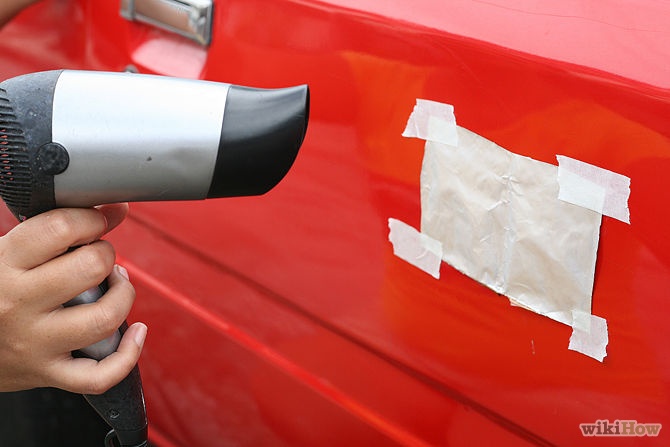Suction devices, in the past sometimes called “plumber’s helpers” or “glazier’s helpers,” are tools that use a vacuum to draw out a dent in metal, returning the panel to its pre-dented condition. They are more effective on large expanses of metal — such as door and wing panels, hoods and trunks — than on smaller and more convoluted areas. They do not work at all on plastic body parts.
Types of Suction Devices
Small and shallow dents can sometimes be pulled using a lavatory plunger, but a proprietary device is likely to be more exact and effective. Some suction cup dent pullers are designed to be used with an air compressor; they are attached to the inlet port, which creates a strong vacuum within the cup. Once the cup is firmly attached to the metal, it is pulled outward using an integral handle. This process, of course, requires access to a compressor. Manual devices are marketed by numerous companies that use an integral valve and pump handle to create the vacuum.
Integral Suction Devices
Suction cup size and handle design are distinct purchasing considerations in purchasing a dent-pulling device. The suction cup must fit smoothly over the entire deformation, meaning that a 6-inch suction cup will repair larger dents than one that measures 4 inches. A steel handle will stand up to more punishment than aluminum, but the latter should be fine for infrequent home use. Some can be pulled double-handed for more aggressive dent removal; twinned with a large suction cup, these works well on fairly large deformities.
Preparation
It often helps reduce the work the suction device has to do by mechanically reducing the deformity first. Wrap a flat metal object that is larger than the dent in several layers of cloth and hold this against the outside of the damaged panel so that it covers the entire deformity. Gently tap the dent from the inside using a flat-ended rubber mallet. Be extremely careful to hit only the underside of the dent, not the undamaged metal around it. Work inward from the shallowest part of the dent to the deepest.
Advice
Older cars are made from sturdier material than most modern vehicles. The thinner metal of newer models makes recovering a deformity easier. The area to be worked on must be clean and free from any atmospheric contamination, particularly grease; the effectiveness of the suction device will be compromised by a dirty or slick surface. In cases where the shape or size of the dent makes it difficult to gain traction, a little water on the suction cup often helps.
Paint adherence is weakened by deformity. It is possible to pull sections of paint away from the car body substrate by using too much suction. Follow the manufacturer’s instructions for the maximum pressure the compressor should exert or the amount of times a manual device should be pumped; if the dent has not pulled out by that limit, release the pressure and start again. An alternative to suction devices is a dent-puller that is glued to the dent; these are notorious for pulling away paint.
DIY vs. Professional Help
Home-use suction devices work well with saucer-like warped indentations. They are typically less successful with dents where the metal is actually folded inward; a gouge where a line or crease is within the deformation. Such dents can often be pulled out without extensive bodywork and respraying by taking the vehicle to a professional “paintless repair” body shop. Professional equipment is far superior to that sold to do-it-yourself mechanics. In some larger metropolitan areas, technicians have vans equipped for just this service, and the body shop can come to you. As with all tradesmen, get a written estimate of the maximum cost of repair before allowing the process to begin.

Suction Device for Removing Car Dents
by
Tags:

Leave a Reply